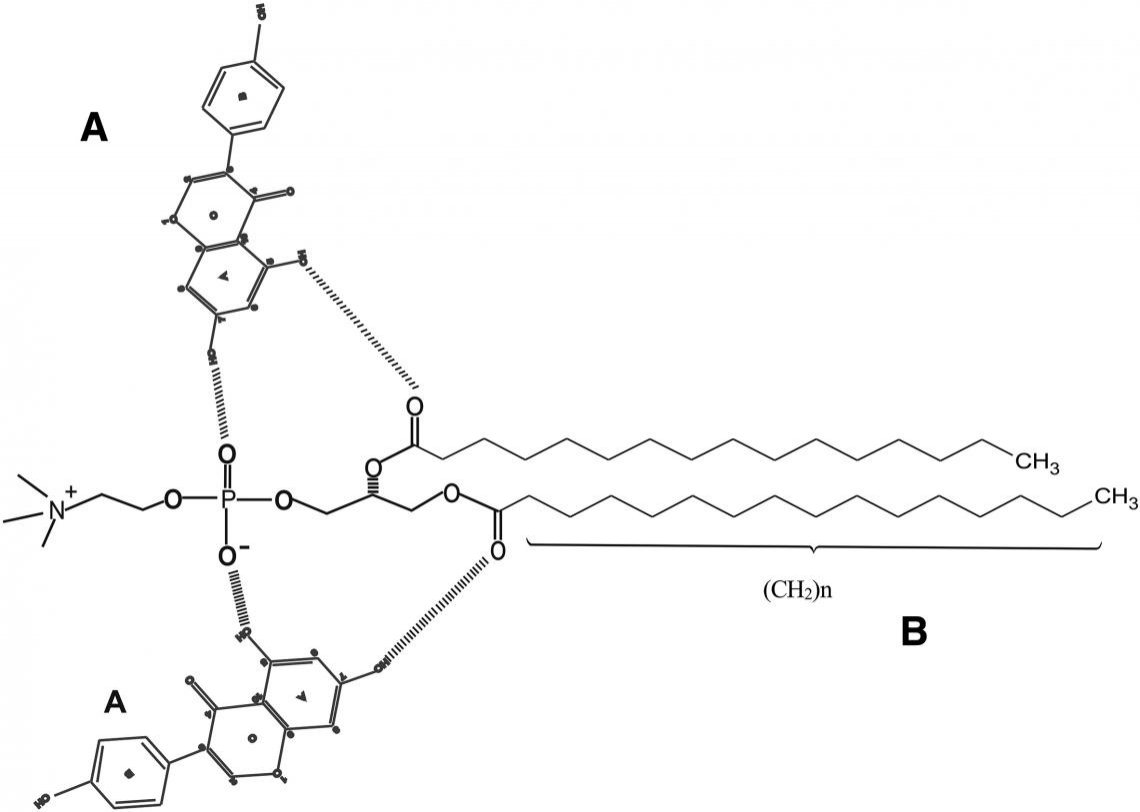
Localization and interaction of genistein with model membranes formed with dipalmitoylphosphatidylcholine (DPPC)
Bożena Pawlikowska-Pawlęga, Lucjan E. Misiak, Barbara Zarzyka, Roman Paduch, Antoni Gawron, Wiesław I. Gruszecki
The effect of genistein on the liposomes formed with dipalmitoylphosphatidylcholine was studied with the application of Fourier-transform infrared spectroscopy, nuclear magnetic resonance (1H NMR) and electron paramagnetic resonance techniques. Membranous structures organization of human skin fibroblasts and colon myofibroblasts was also examined using fluorescence and electron microscopy. The strongest rigidifying effect of genistein with respect to polar head groups was concluded on the basis of the effect of the flavonoid on the shape of NMR lines attributed to –N+(CH3)3 groups. The rigidifying effect of genistein with respect to the hydrophobic core of lipid membranes was also concluded from the genistein-dependent broadening of the NMR lines assigned to –CH2 groups and terminal –CH3 groups of alkyl chains. EPR data supported ordering effect of genistein of the hydrophobic core in the liquid–crystalline phase (Lα). The analysis of the FTIR spectra of the two-component liposomes showed that genistein incorporates into DPPC membranes via hydrogen bonding between the lipid polar head groups in the C–O–P–O–C segment and its hydroxyl groups. Both fluorescence microscopy and ultrastructural observation revealed changes in membranous structures organization as aftermath of genistein treatment. In conclusion, genistein localized within membranes changes the properties of membrane that can be followed by the changes inside cells being crucial for pharmacological activity of genistein used in cancer or other disease treatment.
